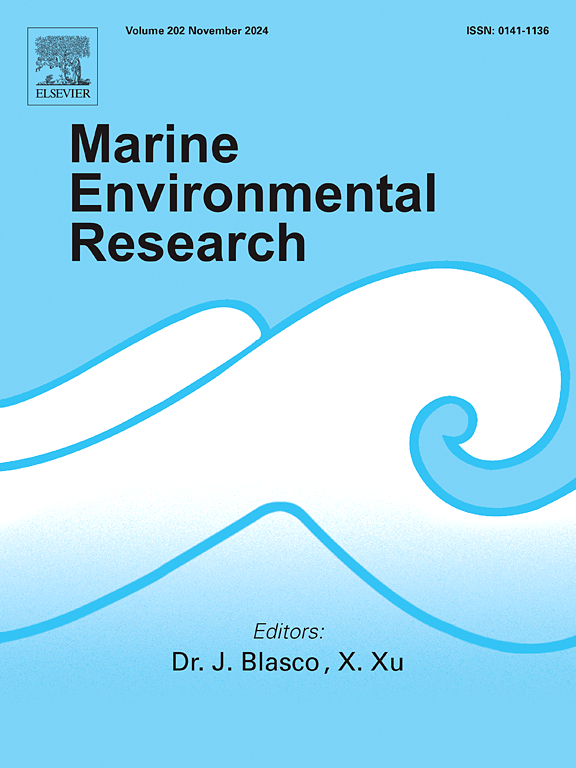Evaluating the impacts of drilling and extraction activities on the marine carbonate system in the natural gas fields of Beibu Gulf, Northern South China Sea
IF 3
3区 环境科学与生态学
Q2 ENVIRONMENTAL SCIENCES
引用次数: 0
Abstract
Natural gas fields are typically located in shallow gulfs. Previous studies have predominantly focused on gas leakage and its subsequent toxic effects on marine organisms; however, the impacts of accidental CO2 leaks on carbonate dynamics during drilling and extraction remain poorly understood. In this study, we investigate carbonate parameters in two gas fields to elucidate the influences of extraction activities and natural processes on carbonate dynamics in Beibu Gulf, situated in the northern South China Sea (nSCS). Our findings indicate that Beibu Gulf acts as a CO2 source during the late spring season, with an air-sea CO2 flux ranging from 1.1 to 4.4 mmol m−2 d−1. Spatially, higher sea surface pCO2 and temperatures were recorded at 479 ± 17 μatm and 29.6 ± 0.3 °C respectively in the Dongfang gas field within the inner gulf, compared to values of 462 ± 20 μatm and 27.6 ± 0.6 °C observed in the Ledong gas field located in the outer gulf. In the Ledong gas field, carbonate dynamics are primarily influenced by mixing between offshore subsurface water and river plumes, with no significant contributions from extraction activities noted. Conversely, dissolved inorganic carbon (DIC) levels within the Dongfang gas field exhibited two extremes: a consumption of 13 μmol kg−1 in surface waters alongside an addition of 20 μmol kg−1 in subsurface waters. Although enhanced biological production may lead to decreased surface pCO2 levels, elevated surface pCO2 values observed at Dongfang can likely be attributed to higher sea surface temperatures. In subsurface layers, we quantify and determine the origin of excess DIC based on δ13CDIC analysis, attributing these carbon inputs to organic matter respiration following surface biological utilization of atmospheric CO2. This study provides the first evidence of high biological DIC consumption in surface waters and DIC generation in subsurface waters within a shallow semi-enclosed bay, a phenomenon previously seen only in river estuaries. We demonstrate that natural processes predominantly govern carbonate dynamics within these gas fields, while any potential influences from extraction activities appear negligible.

求助全文
约1分钟内获得全文
求助全文
来源期刊

Marine environmental research
环境科学-毒理学
CiteScore
5.90
自引率
3.00%
发文量
217
审稿时长
46 days
期刊介绍:
Marine Environmental Research publishes original research papers on chemical, physical, and biological interactions in the oceans and coastal waters. The journal serves as a forum for new information on biology, chemistry, and toxicology and syntheses that advance understanding of marine environmental processes.
Submission of multidisciplinary studies is encouraged. Studies that utilize experimental approaches to clarify the roles of anthropogenic and natural causes of changes in marine ecosystems are especially welcome, as are those studies that represent new developments of a theoretical or conceptual aspect of marine science. All papers published in this journal are reviewed by qualified peers prior to acceptance and publication. Examples of topics considered to be appropriate for the journal include, but are not limited to, the following:
– The extent, persistence, and consequences of change and the recovery from such change in natural marine systems
– The biochemical, physiological, and ecological consequences of contaminants to marine organisms and ecosystems
– The biogeochemistry of naturally occurring and anthropogenic substances
– Models that describe and predict the above processes
– Monitoring studies, to the extent that their results provide new information on functional processes
– Methodological papers describing improved quantitative techniques for the marine sciences.
 求助内容:
求助内容: 应助结果提醒方式:
应助结果提醒方式:


